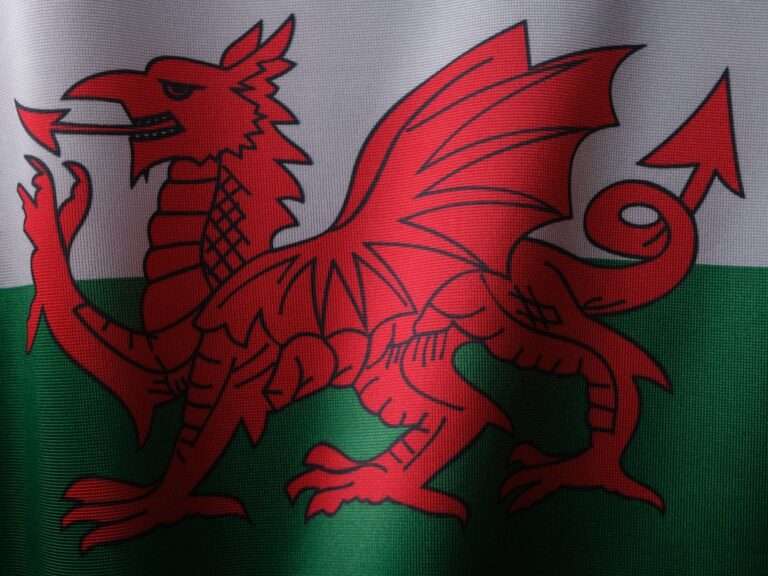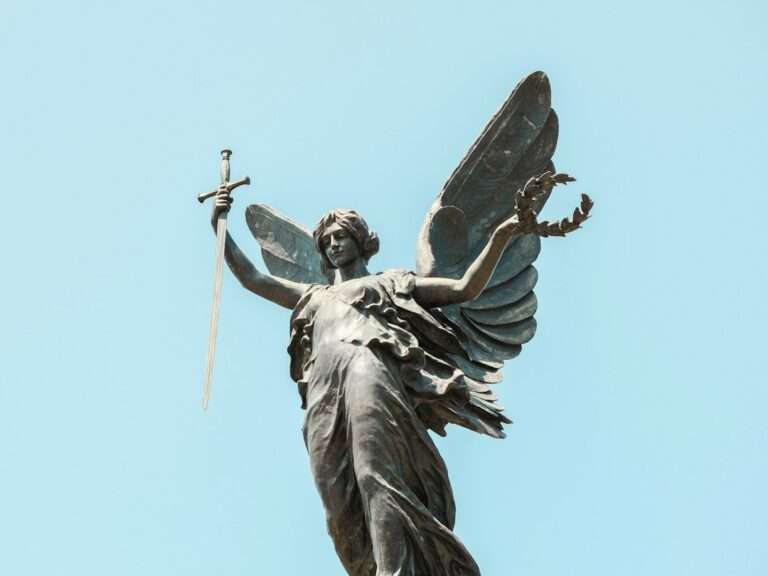The Significance of Symbolism: Exploring the Role of The Father in Literature and Beyond

Symbolism is a powerful tool used in literature and beyond to convey deeper meanings and evoke emotions. It is the use of symbols to represent ideas or qualities, often with a deeper, hidden meaning. Symbolism allows writers to communicate complex ideas and emotions in a way that is accessible and relatable to readers. It adds depth and richness to a story, making it more engaging and thought-provoking.
Beyond literature, symbolism is also prevalent in art, music, religion, and culture. It is a universal language that transcends barriers and connects people on a deeper level. Symbols have the power to evoke strong emotions, trigger memories, and convey complex concepts that words alone cannot fully express.
Key Takeaways
- Symbolism is a powerful tool in literature and beyond.
- Archetypal symbols have significant meaning and are universal.
- The father archetype is a common symbol in literature.
- Fathers are often portrayed as providers, protectors, guides, and sources of conflict.
- The father archetype is also present in religion and mythology.
Understanding Archetypal Symbols and Their Significance
Archetypal symbols are universal symbols that are deeply ingrained in the collective unconscious of humanity. They are recurring motifs or images that appear across different cultures and time periods. These symbols tap into our shared human experiences and evoke deep emotions and meanings.
Archetypal symbols have a profound significance in literature and culture because they resonate with readers on a subconscious level. They tap into our primal instincts, fears, desires, and aspirations. They represent fundamental aspects of the human experience that are universally understood.
The Father Archetype: A Universal Symbol in Literature
The father archetype is one of the most prevalent archetypal symbols in literature. It represents the paternal figure, the protector, provider, guide, and authority figure. The father archetype embodies qualities such as strength, wisdom, guidance, discipline, and love.
The father archetype is universal because the role of a father figure is present in every culture and society. Whether biological or symbolic, fathers play a crucial role in shaping the lives of their children. They provide guidance, protection, and support, and their presence or absence has a profound impact on the development and well-being of their children.
The Father as a Provider and Protector: Examples from Literature
| Father | Literature | Provider | Protector |
|---|---|---|---|
| Atticus Finch | To Kill a Mockingbird | Provided for his family as a lawyer | Protected his children from racism and violence |
| Bob Cratchit | A Christmas Carol | Provided for his family as a clerk | Protected his son, Tiny Tim, from poverty and illness |
| Mr. Bennet | Pride and Prejudice | Provided for his family as a landowner | Protected his daughters from social pressure and scandal |
| Pa Ingalls | Little House on the Prairie | Provided for his family as a farmer | Protected his family from harsh weather and dangerous animals |
In literature, fathers are often portrayed as providers and protectors. They are the ones who work hard to provide for their families, ensuring their physical and emotional well-being. They are the ones who protect their loved ones from harm and danger.
One example of a father as a provider and protector is Atticus Finch in Harper Lee’s “To Kill a Mockingbird.” Atticus is a single father who works as a lawyer to provide for his children. He teaches them important life lessons about justice, equality, and empathy. He also protects them from the prejudice and hatred that exists in their community.
Another example is Bob Cratchit in Charles Dickens’ “A Christmas Carol.” Despite his meager income, Bob Cratchit works tirelessly to provide for his family. He is a loving father who cares deeply for his children, especially his disabled son, Tiny Tim. Despite their poverty, Bob Cratchit creates a loving and nurturing environment for his family.
The Father as a Guide and Mentor: Examples from Literature
Fathers are often portrayed as guides and mentors in literature. They are the ones who impart wisdom, knowledge, and life lessons to their children. They serve as role models and help shape the moral compass of their children.
One example of a father as a guide and mentor is Mr. Murry in Madeleine L’Engle’s “A Wrinkle in Time.” Mr. Murry is a scientist who encourages his daughter, Meg, to embrace her intelligence and curiosity. He teaches her about the power of love, courage, and individuality. Through his guidance, Meg learns to overcome her insecurities and embrace her unique gifts.
Another example is Lord Eddard Stark in George R.R. Martin’s “A Game of Thrones.” Lord Stark is a noble and honorable man who instills in his children the values of loyalty, integrity, and justice. He serves as a mentor to his children, teaching them about the complexities of power and the importance of doing what is right, even in the face of adversity.
The Father as a Source of Conflict and Tension: Examples from Literature

Fathers can also be a source of conflict and tension in literature. Their expectations, demands, or actions can create conflicts within families or between characters. These conflicts often arise from the clash between generations, differing values, or conflicting desires.
One example of a father as a source of conflict and tension is King Lear in William Shakespeare’s play “King Lear.” King Lear’s decision to divide his kingdom among his daughters based on their flattery leads to a series of tragic events. His inability to see through his daughters’ false praises and his subsequent mistreatment by them create a rift within the family and ultimately lead to his downfall.
Another example is Mr. Bennet in Jane Austen’s “Pride and Prejudice.” Mr. Bennet’s indifference and neglect towards his family create tension within the household. His failure to provide guidance and support to his daughters leads to their vulnerability and dependence on marriage for security and social standing.
The Father as a Symbol of Authority and Control: Examples from Literature
Fathers are often portrayed as symbols of authority and control in literature. They represent the patriarchal structure of society and the power dynamics within families. Their actions and decisions can have far-reaching consequences for their children and those around them.
One example of a father as a symbol of authority and control is Big Brother in George Orwell’s “1984.” Big Brother is the ultimate authority figure who exercises complete control over every aspect of people’s lives. He represents the oppressive regime that seeks to suppress individuality, free thought, and dissent.
Another example is King Duncan in William Shakespeare’s play “Macbeth.” King Duncan is the rightful ruler of Scotland and represents the established order. His murder by Macbeth, driven by his ambition for power, sets in motion a series of tragic events that lead to the downfall of Macbeth and the disruption of the natural order.
The Father as a Symbol of Love and Affection: Examples from Literature
Fathers can also be symbols of love and affection in literature. They are the ones who express their love and care for their children, providing emotional support and nurturing their emotional well-being.
One example of a father as a symbol of love and affection is Marlin in Pixar’s animated film “Finding Nemo.” Marlin is a clownfish who embarks on a journey to find his son, Nemo, who has been captured by a diver. Throughout the film, Marlin demonstrates unwavering love and determination to reunite with his son, overcoming numerous obstacles along the way.
Another example is Mr. Weasley in J.K. Rowling’s “Harry Potter” series. Mr. Weasley is a loving father who cares deeply for his children. He provides emotional support and guidance to Harry Potter, treating him as one of his own. His love and acceptance of Harry help him navigate the challenges he faces as a young wizard.
Beyond Literature: The Father Archetype in Religion and Mythology
The father archetype is not limited to literature but is also prevalent in religion and mythology. In many religious traditions, God is often portrayed as a father figure who provides guidance, protection, and unconditional love.
In Christianity, God is referred to as “Our Father” and is seen as the ultimate source of love and wisdom. The image of God as a loving father who cares for his children is central to Christian beliefs and teachings.
In Greek mythology, Zeus is the king of the gods and the father of gods and men. He represents the paternal figure who exercises authority and control over the other gods and mortals. His actions and decisions shape the course of events in the mythological world.
The Enduring Significance of the Father Archetype and Symbolism in Our Lives
The father archetype and symbolism have an enduring significance in our lives. They tap into our shared human experiences, emotions, and aspirations. They help us make sense of the world around us and connect with others on a deeper level.
The father archetype represents the universal qualities of protection, guidance, authority, and love. It reflects the complex dynamics within families and societies. Whether portrayed as a provider, protector, guide, or source of conflict, fathers play a crucial role in shaping our lives and identities.
Symbolism, on the other hand, allows us to communicate complex ideas and emotions that words alone cannot fully express. It adds depth and richness to literature, art, music, religion, and culture. Symbols have the power to evoke strong emotions, trigger memories, and convey profound meanings.
In conclusion, the father archetype and symbolism are powerful tools that help us understand ourselves and the world around us. They remind us of the importance of family, love, guidance, and the complexities of human relationships. By exploring these archetypes and symbols in literature and beyond, we gain a deeper understanding of ourselves and our place in the world.
If you’re interested in exploring more symbolism, you might find the article on “Symbolism of the Sun” intriguing. This article delves into the various meanings and representations associated with the sun in different cultures and belief systems. From its association with life and vitality to its symbolic significance in astrology and mythology, the sun holds a powerful place in human symbolism. To learn more about this fascinating topic, check out the Symbolism of the Sun article on Symbolism Hub.
FAQs
What is Symbolism The Father?
Symbolism The Father is a literary technique used to represent a father figure or fatherhood through symbols and metaphors.
What are some common symbols used in Symbolism The Father?
Some common symbols used in Symbolism The Father include the sun, trees, mountains, and animals such as lions and eagles.
What is the purpose of Symbolism The Father?
The purpose of Symbolism The Father is to convey the idea of fatherhood and the relationship between a father and his child through the use of symbols and metaphors.
What are some examples of Symbolism The Father in literature?
Some examples of Symbolism The Father in literature include Atticus Finch in To Kill a Mockingbird, Willy Loman in Death of a Salesman, and Okonkwo in Things Fall Apart.
How does Symbolism The Father differ from other literary techniques?
Symbolism The Father differs from other literary techniques in that it specifically focuses on the representation of fatherhood through symbols and metaphors, whereas other techniques may focus on different themes or ideas.
Can Symbolism The Father be used in other forms of art?
Yes, Symbolism The Father can be used in other forms of art such as painting, sculpture, and film to represent fatherhood through visual symbols and metaphors.





